Three new iPhones means you have to make a choice: Do you go with the smaller iPhone XS, the larger iPhone XS Max, or the cheaper iPhone XR? There's lots to like about each model, but if you want to make an informed decision, it's time to learn what each has to offer. Here's what the iPhone XS Max brings to the table.
The iPhone XS Max is Apple's largest new iPhone — in short, it's a scaled-up version of the iPhone XS, which itself is an iterative update to 2017's revolutionary iPhone X. If you're a former iPhone 7 Plus or 8 Plus user, this is the bezel-less, Face ID-equipped spiritual successor to your old phone.
Jump to a section: Important Dates | Storage Capacity | Price for Everything | Body | Basics | Display | Performance | Battery | Front Camera | Rear Camera | Audio | Sensors | Connectivity | Security | Software | Box Includes
Important Dates
Apple announced the new iPhone XS Max on Sept. 12, 2018 alongside the smaller iPhone XS and the iPhone XR. The higher-end XS and XS Max will go up for preorder from Apple, carriers, and retailers on Sept. 14, 2018, and they'll hit store shelves on Sept. 21, 2018.
- Release date: Sept. 21, 2018
- Preorder date: Sept. 14, 2018
- Announced: Sept. 12, 2018
Storage Capacity
The iPhone XS Max will come in 64 GB, 256 GB, and 512 GB storage capacities. There won't be support for expandable storage via micro SD cards, but that's par for the course.
- Storage available: 64 GB, 256 GB, or 512 GB
- Expandable storage: no
Price for Everything
We're talking about the absolute top-tier phone from Apple here, so cost is certainly a factor. The 64 GB iPhone XS Max will start at $1,099, while the 256 GB model will cost you $1,249. If you want the top storage tier, you'll end up paying $1,449. None of these prices include tax or carrier fees (such as upgrade charges), and you'll probably want to get AppleCare+ to protect your investment (a more expensive plan includes lost/theft coverage).
- Price: $1,099 (64 GB), $1,249 (256 GB), or $1,449 (512 GB) plus tax
- AppleCare+: $199 or $299 (optional)
This is uncharted territory for a mainstream, mass-produced smartphone. Let's say you opt for the max storage variant and start with a base price of $1,449. Add tax and you're already close to $1,600. Tack on AppleCare+, carrier fees, and maybe a couple of accessories, and you could very well be paying nearly two grand for this phone. Remember, though, you get what you pay for, and you're paying for the best.
Body
The iPhone XS Max has a polished stainless steel frame around the edges with glass panels covering the front and back to facilitate Qi wireless charging. There are three color options: space grey, silver, and gold.
- Frame: stainless steel
- Finish: space gray, silver, gold
Apple tried to use as many sustainable materials as possible, so there's no arsenic, beryllium, brominated flame retardant, mercury, or PVC. In fact, the stainless steel is actually recyclable.
Basics
The iPhone XS Max is very similar in size to the iPhone 8 Plus, but keep in mind that the screen is much larger, so it may be harder to use one-handed. It's water-resistant (not waterproof), as it has an "Ingress Protection" rating of IP68. The 6 means it's entirely dust-proof, and the 8 means it can be submerged in water as deep as two meters for up to 30 minutes. All four major US carriers are supported, and US Cellular support should come soon.
- Height: 6.20 inches
- Width: 3.05 inches
- Depth: 0.30 inches
- Weight: 7.34 ounces
- Dust/water resistance: IP68 under IEC standard 60529
- Supported carriers: AT&T, Sprint, T-Mobile, Verizon
The phone will operate normally as long as ambient temperatures are above freezing and below the mid-nineties in Fahrenheit. If you have the phone turned off, it can survive in even more extreme temperature ranges.
- Operating temp: 32° to 95° F
- Nonoperating temp: -4° to 113° F
- Relative humidity: 5–95% noncondensing
- Operating altitude: up to 10,000 feet (though could be more)
Display
One of the most important features of any phone is its screen, and that's doubly true for the iPhone XS Max with its edge-to-edge 6.5-inch screen. It has a resolution of 2688 x 1242, which is higher than the iPhone XS. However, its pixel density is identical to the smaller XS at 458 ppi.
Apple opted for an OLED panel with the XS Max, which is a much newer technology than traditional LCD screens that were invented decades ago. The screen-to-body ratio is 84.4%, one of the largest on the market, and the screen uses a 19.5:9 aspect ratio. The brightness can go from a dim 2 nits up to 640 nits, and the color temperature clocks in at a slightly cool 6,883 K. It's got an oleophobic coating to prevent fingerprints and supports 3D Touch.
- Screen size: 6.5 inches
- Screen resolution: 2688 x 1242 pixels
- Pixel density: 442 ppi
- Screen type: OLED, Super Retina HD
- Notch: yes
- Screen-to-body ratio: 84.4%
- Aspect ratio: 19.5:9
- Minimum brightness: 2 nits
- Maximum brightness: 625 nits
- Refresh rate: 60 Hz
- Touch refresh rate: 120 Hz
- Color temperature: 6,883 K
- 3D Touch: yes
Performance
Apple's been slowly increasing the RAM in its phones in recent years. Now, the iPhone XS Max sports a whopping 4 GB of memory — one more gig than 2017's iPhone X and twice the RAM of the iPhone 7. Apple's own A12 Bionic processor will be powering it all, and it comes equipped with a "next-generation Neural Engine" for machine learning. The CPU has six cores with a frequency of 2.496 GHz, a tiny update over the 8 Plus.
- Memory: 4 GB RAM
- Processor: Apple A12 Bionic with 64-bit architecture
- Chip size: 7 nanometer
- Coprocessor: unknown
- CPU frequency: 2.496 GHz
- CPU cores: 6
- GPU: Apple-designed (unknown model)
- GPU cores: 4
Battery
With the largest lithium-ion battery in Apple's current lineup, 3,174 mAh, you can expect slightly better battery life than the iPhone 8 Plus. Look for usage stats in the neighborhood of 21 hours for talk time, 13 for internet use, 14 for video playback, and 60 for audio playback.
The battery can be charged with the included Lightning to USB cable (attached to a PC or power adapter), or you can enable fast charging if you buy a Lightning to USB-C cable with an appropriate wall adapter to get about 50% battery in 30 minutes. It also supports any Qi-certified charging pad, such as Apple's new AirPower wireless charging station.
- Battery: rechargeable lithium-ion
- Capacity: 3,174 mAh
Front Camera
The iPhone XS Max has a 7 MP TrueDepth camera system in the front for taking selfies and enabling Face ID, which is Apple's new facial recognition technology that replaces Touch ID from iPhones past.
The same front camera system can shoot in Portrait and Portrait Lighting modes and capture Live Photos, and the TrueDepth tech also powers Animoji and Memoji. For pure camera specs, it has 1080p (full HD) video recording with an ƒ/2.2 aperture, image stabilization, and supports HDR.
- Resolution: 7 MP
- Aperture: ƒ/2.2
- Zoom: no
- Flash: screen-based
- Image stabilization: software-based
- RAW support: no
- Object detection: bodies, faces, winks, tongues
Rear Camera
There are two camera sensors on the rear of the iPhone XS Max. Both have a resolution of 12 MP, but one uses a wide-angle lens (ƒ/1.8 aperture) and the other uses a telephoto lens (ƒ/2.4 aperture). The telephoto lens gives you 2x optical zoom capabilities, and both sensors have optical image stabilization to prevent shake in videos and help in low-light photos.
Apple calls its flash system "quad LED True Tone flash with Slow Sync," which is marketing speak for a 4-LED system that tries to correct for ambient color temperatures to provide more realistic flash photography. Like with the front camera, you get Portrait and Portrait Lighting modes with Live Photos. Other software features include exposure control, timer and burst modes, and HDR.
The stock camera app does not allow for RAW image capture, but you can get this functionality with third-party camera apps. You can capture panoramas with the default camera app at a resolution of up to 63 MP, and you can take Live Photos with stabilization and "Focus Pixels," the latter being used for autofocus and manual focus. Photos are captured in Apple's new HEIF format by default.
- Resolution: 12 MP
- Sensor Size: 1.4 µm
- Aperture: ƒ/1.8 (wide-angle) and ƒ/2.4 (telephoto)
- Zoom: 2x optical, 10x digital
- Flash: Quad-LED True Tone flash with Slow Sync
- Image stabilization: optical
- RAW support: yes
- Lens cover: sapphire crystal
- Object detection: bodies, faces
- Formats: HEIF, JPEG, RAW
Videos can be captured in either 720p, 1080p, or 4K resolution with a max frame rate of 60 frames per second (30 for 720p). The non-4K resolutions will also give you cinematic video stabilization, and you can shoot in slow-motion at 120 or 240 fps (1080p). Another nice feature is the ability to take 8 MP still photos while filming a video in 4K.
You can use the Quad-LED True Tone flash with videos as well, but Slow Sync is only available for photos. The stock camera app also supports image stabilization, body and face detection, geotagging, continuous autofocus, and lets you zoom. Videos can be saved as either H.264 files, or H.265 encoded with Apple's new HEVC codec.
- Resolution: 720p, 1080p, and 4K
- Max frame rate: 30 fps for 720p, 60 fps for 1080p and 4K
- Slow motion: yes, 1080p at 120 or 240 fps
- Time-lapse: yes, with stabilization
- Photos: 8 MP stills while recording 4K
- Zoom: 2x optical, 6x digital
- Flash: Quad-LED True Tone flash
- Image stabilization: optical
- Lens cover: sapphire crystal
- Object detection: bodies, faces
- Formats: H.264, H.265 (HEVC)
Audio
To no one's surprise, the XS Max doesn't have a headphone jack, but you do still get a Lightning to 3.5 mm headphone jack adapter. There are stereo speakers with one front-facing speaker up top by the TrueDepth camera and one on the bottom next to the Lightning port. There are built-in microphones near both speakers and a third around back next to the cameras.
When it comes to audio formats, the iPhone XS Max supports AAC-LC, HE-AAC, HE-AAC v2, Protected AAC, MP3, Linear PCM, Apple Lossless, FLAC, Dolby Digital (AC-3), Dolby Digital Plus (E-AC-3), and Audible (formats 2, 3, 4, Audible Enhanced Audio, AAX, and AAX+).
- 3.5 mm headphone jack: no
- Stereo speakers: yes
- Mics: three total (on rear, front, and bottom)
- Max speaker volume: unknown
Sensors
The XS Max supports all four major location standards for maps and navigation, with assisted GPS for North America, GLONASS in Russia, Galileo in Europe, and QZSS in Japan.
There's an accelerometer to sense movement and a three-axis gyroscope to measure "the rate at which [the] device rotates around a spatial axis," according to Apple. Data from both of these sensors is combined to measure precise movements of your phone, which is helpful for many games and augmented reality.
The built-in ambient light sensor measures the light around you to help with the iPhone XS Max's auto-brightness feature, and a proximity sensor near the TrueDepth camera can detect when objects are near to the screen (useful for turning the display off when you press your phone to your ear in a call).
There's also a pedometer to help you stay fit by tracking steps in your Health app. It's not quite as accurate as pedometers in the Apple Watch or Fitbit watches, but it works fairly well. A magnetometer measures the Earth's magnetic fields to serve as a compass of sorts, and a barometer measures air pressure and helps determine elevation.
- Sensors: aGPS, barometer, accelerometer, three-axis gyroscope, proximity sensor, magnetometer, barometer, digital compass, pedometer
Connectivity
In our always-connected world, the iPhone XS Max has support for a myriad of wireless connection protocols. Its NFC (Near Field Communication) chip can read electronic tags or real-world objects like in-store signs and store products in supported apps. There's support for Bluetooth 5, so you can now simultaneously connect two accessories like headphones, speakers, remote shutters, and car stereos.
Of course, there's also support for mobile data and Wi-Fi. One interesting aspect is dual-SIM support via one physical SIM and a secondary eSIM — handy for using your iPhone XS Maxs as both a work and personal phone.
- Wi-Fi: 802.11ac with 4 x 4 MIMO antenna
- Bluetooth: 5
- NFC: yes
- Cellular: Nano-SIM and eSIM (dual)
- Port: Lightning
- Other: iBeacon microlocation, AirPlay, AirDrop
As for the wireless bands, there are two models that work with CDMA and GSM networks, and one that does not support CDMA (Sprint or Verizon), but works with almost every other carrier in the world.
Model A2097
- FDD-LTE bands 1, 2, 3, 4, 5, 7, 8, 12, 13, 17, 18, 19, 20, 25, 26, 28, 29, 30, 66
- TD-LTE bands 38, 39, 40, 41
- TD-SCDMA 1900 (F), 2000 (A)
- CDMA EV-DO Rev. A (800, 1700/2100, 1900, 2100 MHz)
- UMTS/HSPA+/DC-HSDPA (850, 900, 1700/2100, 1900, 2100 MHz)
- GSM/EDGE (850, 900, 1800, 1900 MHz)
- UMTS/HSPA+/DC-HSDPA (850, 900, 1700/2100, 1900, 2100 MHz)
Model A2098
- LTE bands 1, 2, 3, 4, 5, 7, 8, 12, 13, 17, 18, 19, 20, 25, 26, 28, 29, 30, 66
- TD-LTE bands 38, 39, 40, 41
- GSM/EDGE (850, 900, 1800, 1900 MHz)
- UMTS/HSPA+/DC-HSDPA (850, 900, 1700/2100, 1900, 2100 MHz)
Model A2099
- FDD-LTE bands 1, 2, 3, 4, 5, 7, 8, 11, 12, 13, 17, 18, 19, 20, 21, 25, 26, 28, 29, 30, 66
- TD-LTE bands 34, 38, 39, 40, 41, 42
- TD-SCDMA 1900 (F), 2000 (A)
- CDMA EV-DO Rev. A (800, 1900, 2100 MHz)
- GSM/EDGE (850, 900, 1800, 1900 MHz)
- UMTS/HSPA+/DC-HSDPA (850, 900, 1700/2100, 1900, 2100 MHz)
Security
If you're upgrading from the iPhone 7 Plus or 8 Plus, the biggest difference in security you'll notice is Face ID. The XS Max uses the above-mentioned TrueDepth camera system to make a 3D map of your face that works in any lighting situation, so all you have to do is look at your phone to unlock it. This is even more secure than a fingerprint, as Face ID boasts a one in a million chance that someone else could unlock your phone.
Face ID also works as the authentication method for Apple Pay and iCloud Keychain, so you can make purchases or send Apple Pay Cash with your face, and you can auto-populate saved passwords by simply looking at your iPhone XS Max.
- Security: Face ID
There's a new USB restricted mode that prevents hackers and law enforcement from using devices like Celebrite and GrayKey to unlock your iPhone XS Max. It's not a perfect fix, but it should prevent unauthorized unlocking in most scenarios — you can learn more here.
Software
As with all 2018 iPhone models, the XS Max runs iOS 12 out of the box — an operating system that every iPhone model from the iPhone 5S onward supports. Given Apple's software support history, it's possible the iPhone XS Max could get updates all the way through iOS 17 in 2023. Worst case, it should certainly get iOS 16 in 2022.
- Software: iOS 12 and higher
Thanks to iOS 12, you'll get FaceTime video calling over Wi-Fi or cellular, FaceTime audio, voice over LTE (VoLTE), and Wi-Fi calling. Supported audio formats are AAC-LC, HE-AAC, HE-AAC v2, Protected AAC, MP3, Linear PCM, Apple Lossless, FLAC, Dolby Digital (AC-3), Dolby Digital Plus (E-AC-3), and Audible (formats 2, 3, 4, Audible Enhanced Audio, AAX, and AAX+) files. For video playback, there's HEVC, H.264, MPEG-4 Part 2, Motion JPEG, and High Dynamic Range with Dolby Vision and HDR10 content.
These are just some of the features you'll get with iOS 12 — really, just a drop in the bucket. For more details on what iOS 12 brings to the table when compared to older iOS versions, make sure to check out the link at the end of this article.
Box Includes
If you think you're ready to put down well over a grand on an iPhone XS Max, here's what you'll get in the box (no Lightning to 3.5 mm headphone jack adapter, unfortunately):
- iPhone XS Max
- EarPods with Lightning connector
- Lightning to USB cable
- USB power adapter
- Documentation
Just updated your iPhone? You'll find new emoji, enhanced security, podcast transcripts, Apple Cash virtual numbers, and other useful features. There are even new additions hidden within Safari. Find out what's new and changed on your iPhone with the iOS 17.4 update.
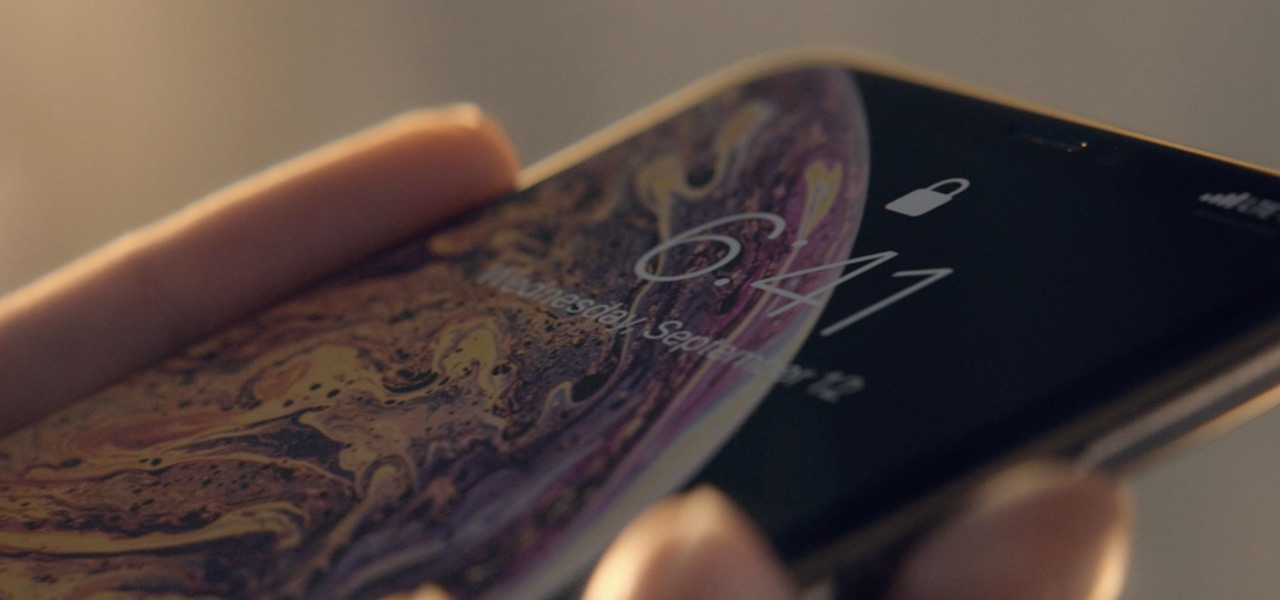


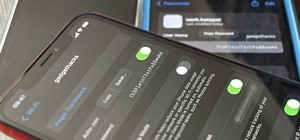





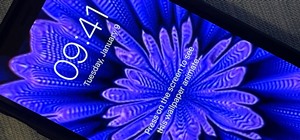
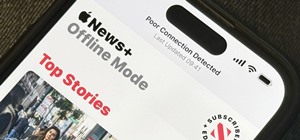







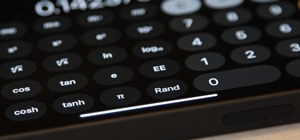

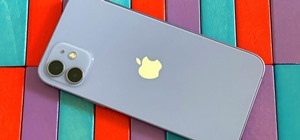
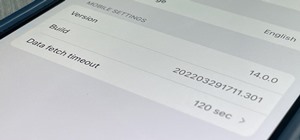

1 Comment
It actually does not come with the lightening to 3.5mm headphone jack adapter. Huge disappointment. Luckily I still have my old one from my iPhone 7plus
Share Your Thoughts